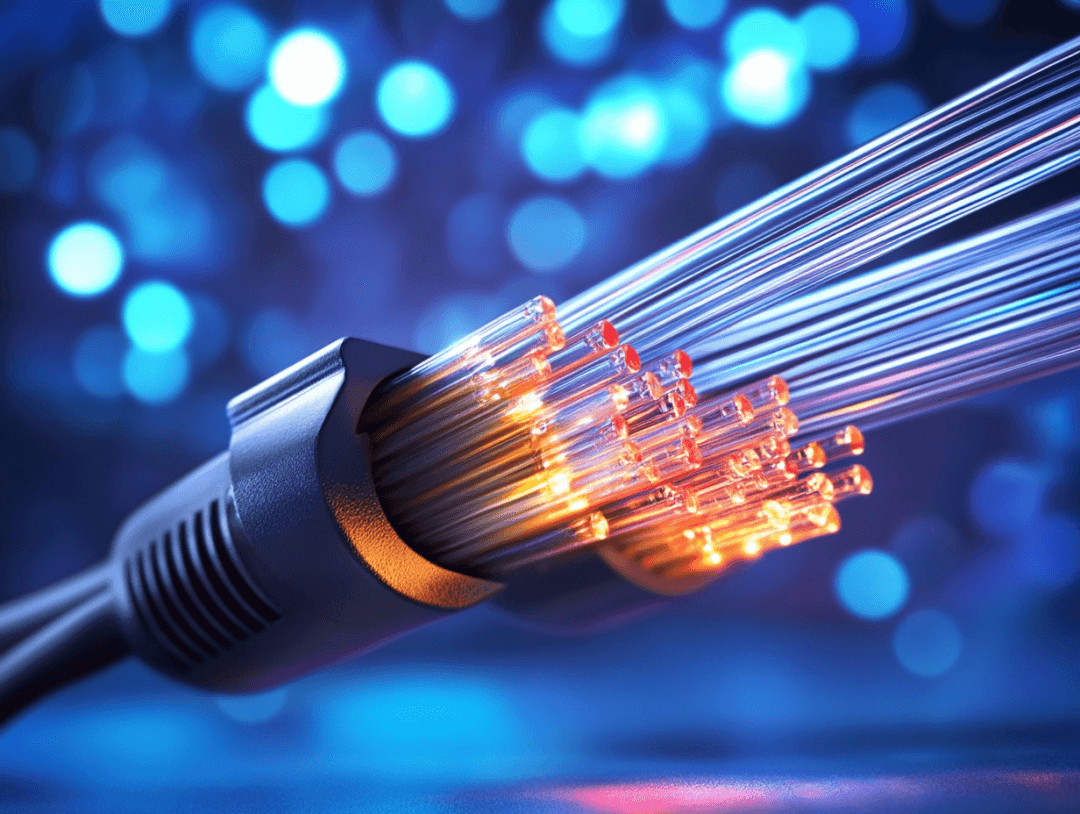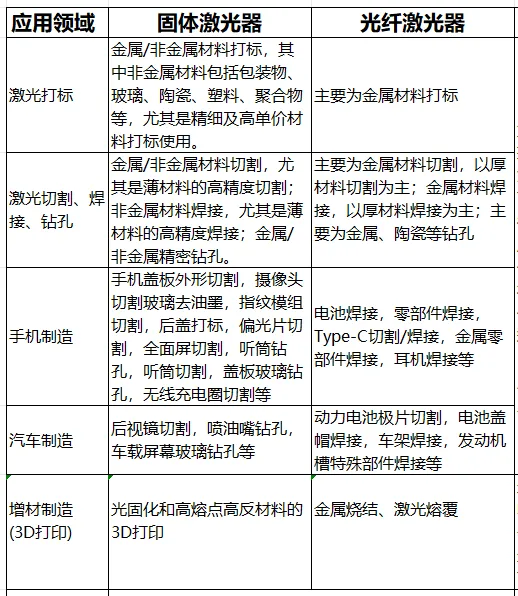 中
中
 0755-86529780
0755-86529780
 中
中
 0755-86529780
0755-86529780

In today's era of rapid development of laser technology, solid-state lasers and fiber lasers, as the two major mainstream laser products, have each demonstrated their unique charm and advantages in many fields such as industrial production, scientific research, and military applications.
1. Technical principles and performance differences
① Gain medium
Fiber laser uses rare earth element doped glass fiber as gain medium. Under the action of pump light, high power density is formed in the optical fiber, resulting in the inversion of the laser energy level population, and laser oscillation is generated through the positive feedback loop of the resonant cavity. The fiber laser has a compact structure and does not require a complex cooling system. The flexibility of the optical fiber makes it more advantageous in multi-dimensional space processing applications.
At the heart of a fiber laser is optical fiber, a flexible, hair-thin filament of glass or plastic known for its ability to guide light over long distances with minimal loss. This fiber acts as the laser's active gain medium and is central to its operation. However, unlike the undoped glass or plastic optical fibers used in telecommunications, the optical fiber in a fiber laser is doped with rare earth elements, such as erbium or ytterbium. This doping introduces the energy states necessary for laser operation, allowing the fiber to not only guide light but also amplify it.
Solid-State Laser (SSL) is centered on its unique gain medium - solid material, and is usually composed of four parts: gain medium, cooling system, optical resonant cavity and pump source. Gain medium, such as ruby (Cr:Al₂O₃) or neodymium-doped yttrium aluminum garnet (Nd:YAG), is the soul of solid lasers. The activated ions (such as Nd³⁺) doped inside it achieve particle number inversion under the action of pump light, thereby generating laser. The cooling system is responsible for taking away the heat accumulated inside the gain medium due to laser generation to ensure stable operation of the laser. The optical resonant cavity forms continuous oscillation through positive feedback of photons, and outputs a highly monochromatic and highly directional laser beam.
②Performance and efficiency
Fiber lasers are known for their exceptional electrical efficiency, thanks to the nature of the fiber optic cable, which conducts light with minimal losses. This feature makes fiber lasers incredibly energy efficient, often achieving efficiencies in excess of 30%.
Solid-state lasers are generally less efficient, probably due to the higher losses in their bulky gain medium and the need for high-intensity lamps for pumping.
③Beam quality: directly affects the effectiveness of lasers in precision applications
The single-mode operation of fiber lasers provides incredibly high beam quality, characterized by tight focusing and minimal divergence. Solid-state lasers, while capable of providing high-quality beams, often have difficulty matching the beam quality of fiber lasers, especially at higher power levels.
Despite their lower efficiency and beam quality, solid-state lasers are not without their advantages. They have great power scaling capabilities, making them ideal for high-power applications. Solid-state lasers can be designed to produce incredibly high power levels by increasing the size of the gain medium and the pump power, which is not so simple for fiber lasers due to limitations in fiber size and heat dissipation.
④Stability
Fiber lasers are highly stable. Their fiber structure is insensitive to environmental changes (such as temperature, humidity, vibration, etc.), and can maintain a stable working state in relatively harsh environments. At the same time, fiber lasers use a solid-state structure and do not contain free-space optical components, so they are considered to be more durable and adaptable to environmental changes.
The stability of solid-state lasers is relatively poor, and changes in environmental factors may have a significant impact on their performance.
⑤ Heat dissipation performance
Fiber lasers have excellent heat dissipation performance. Its gain medium is optical fiber, which has a large surface area to volume ratio, and heat can be dissipated quickly, so it can work stably for a long time and can withstand high power output.
The heat dissipation of solid-state lasers is relatively difficult, and thermal effects are prone to occur when operating at high power, affecting the performance and life of the laser.
⑥Size and maintenance cost
Fiber lasers are very compact and virtually maintenance-free. The small size of the fiber and the absence of external mirrors greatly reduce alignment issues associated with solid-state lasers. In addition, the excellent heat dissipation capabilities of the fiber often eliminate the need for active cooling, further reducing maintenance requirements. At the same time, fiber lasers are generally safer to operate because the laser light is confined within the fiber, reducing the risk of accidental exposure.
The alignment of mirrors in solid-state lasers is critical to their operation and requires regular inspection and adjustment, which increases the maintenance workload. In addition, solid-state lasers often require active cooling to manage the heat generated in the gain medium, which not only increases the complexity of the system but also increases the maintenance requirements. Solid-state lasers tend to be larger than fiber lasers. The need for large gain mid-mirrors and external mirrors increases their size and weight, limiting their applicability in applications where space is limited.
2. Application fields
Fiber lasers shine in the fields of industrial cutting and welding with their high power, high beam quality, good heat dissipation performance and stability. Fiber lasers are particularly suitable for thick plate cutting and welding of metal materials. Their high electro-optical conversion efficiency and adjustment-free and maintenance-free design greatly reduce the cost of use and the difficulty of maintenance. At the same time, the fiber laser's high tolerance to harsh working environments, such as dust, vibration, humidity, etc., also makes it perform well in various industrial sites. Continuous lasers have a high degree of penetration in the field of macro processing and have gradually replaced traditional processing methods in this field.
Solid-state lasers are unique in the field of ultra-precision and ultra-micro processing with their high peak power, large pulse energy and short wavelength laser output (such as green light and ultraviolet light). In processes such as metal/non-metal material marking, cutting, drilling and welding, solid-state lasers can achieve higher processing accuracy and wider material applicability. Especially in high-precision welding and photocuring 3D printing of non-metallic materials, solid-state lasers have become the preferred equipment due to their short-wavelength lasers with small thermal effects and high processing accuracy. Solid-state lasers are mainly used in the field of precision micro-processing of non-metallic materials and thin, brittle and other metal materials due to their short wavelength (ultraviolet, deep ultraviolet), short pulse width (picosecond, femtosecond) and high peak power. In addition, solid-state lasers are widely used in cutting-edge scientific research in the fields of environment, medicine, military and other fields.

3. Market Share
my country's manufacturing industry is in the process of transformation and upgrading from low- and medium-end manufacturing to high-end manufacturing. Low- and medium-end manufacturing accounts for a high proportion. The macro-processing market covers both low- and medium-end manufacturing and part of high-end manufacturing. The market demand is large. Therefore, the market capacity of fiber lasers is relatively large.
The domestic low- and medium-power fiber lasers are highly localized, and there are many large-scale domestic manufacturers. According to the "China Laser Industry Development Report", low-power fiber lasers have been fully replaced by domestic products; in terms of medium-power continuous fiber lasers, domestic products have no obvious disadvantages in quality, obvious price advantages, and a comparable market share; in terms of high-power continuous fiber lasers, domestic brands have achieved partial sales.
As for solid-state lasers, due to the late development in China, there are currently no listed companies with this product as their main business, and they generally purchase foreign brands.
Fiber lasers are mainly used in the field of macro processing due to their high output power (laser macro processing generally refers to the processing of the size and shape of the laser beam on the processing object with a range of millimeters); solid-state lasers have the advantages of short wavelength, narrow pulse width, and high peak power, and are widely used in the field of micro processing (micro processing generally refers to the processing of size and shape with a precision of micrometers or even nanometers), resulting in certain differences between users of solid-state lasers and fiber lasers.
In general, solid-state lasers and fiber lasers have different application areas. There is no direct competition between the two in most areas. In the field of metal material processing that overlaps with the field of micro-processing, when the metal reaches a certain thickness, this field generally uses traditional methods or fiber lasers for cost reasons. Solid-state lasers are only used in scenarios where the metal thickness is thin or the processing requirements are high and the cost is not sensitive. In addition, the competition overlap between the two is low. Solid-state lasers are mainly used for non-metallic materials (glass, ceramics, plastics, polymers, packaging, other brittle materials, etc.) processing, and in the field of metal materials, they are used in scenarios with high precision requirements and relatively insensitive to cost.